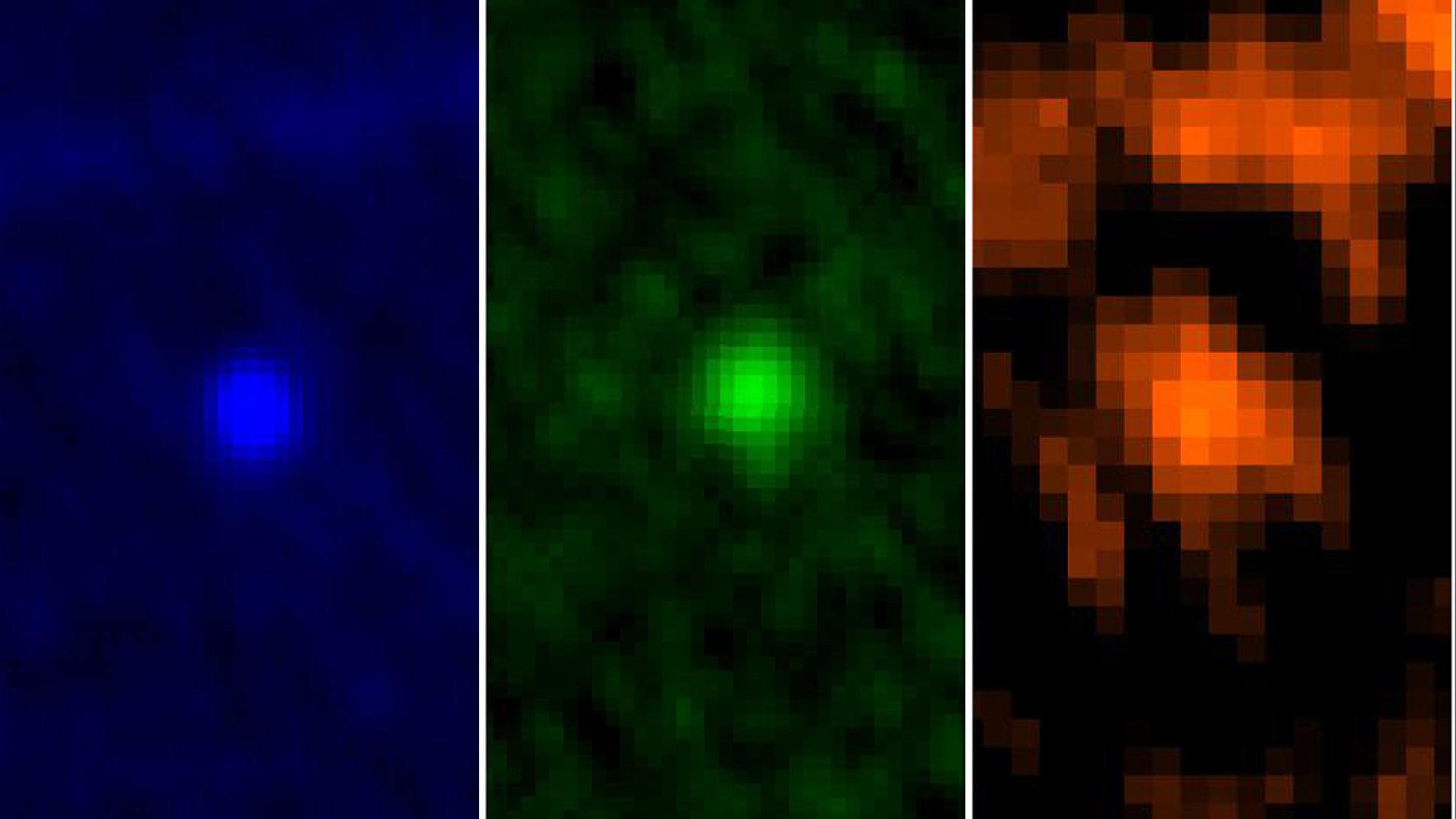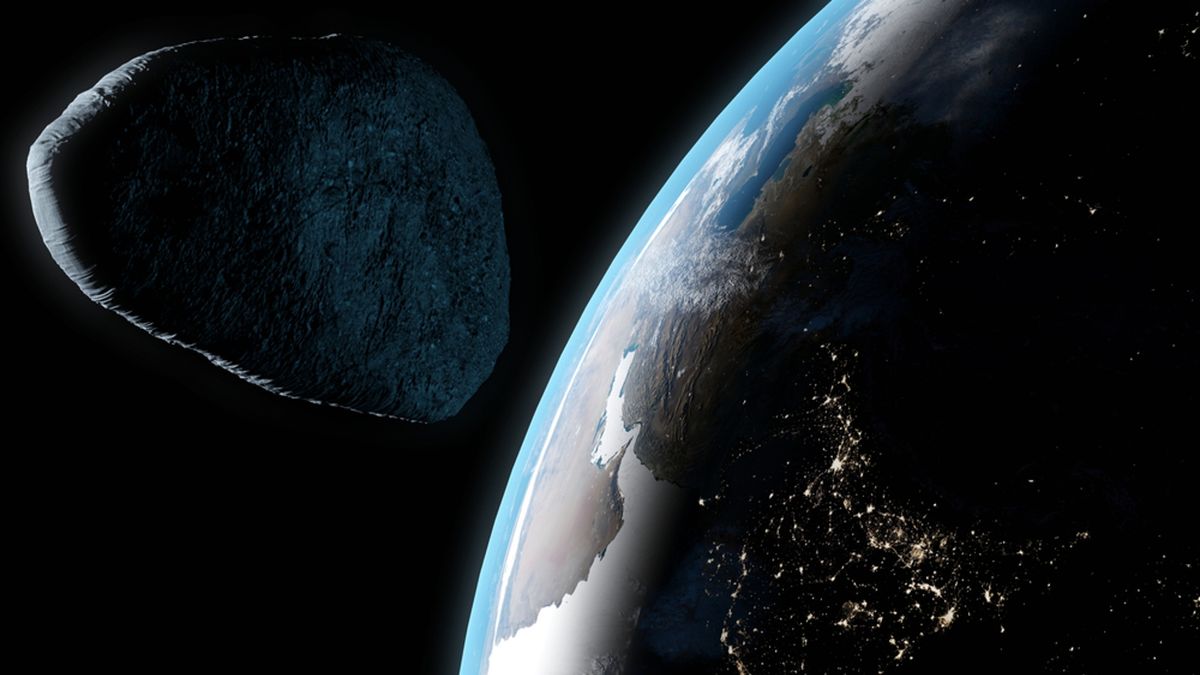There is a slim but overlooked risk that the “God of Chaos” asteroid Apophis could hit Earth as it makes a super close approach to our planet in 2029, a new study reveals. The odds of such a calamitous collision are more than one-in-a-billion — but we won’t be able to rule it out for at least three more years.
Apophis is a peanut-shaped space rock spanning around 1,100 feet (340 meters) across, or around the same size as the Eiffel Tower. At this size, the chunky space rock is not hefty enough to be considered a “planet killer” asteroid but is big enough to wipe out a large city and trigger planet-wide climatic effects. The “potentially hazardous” object was discovered in 2004 and was named after Apep, the Egyptian serpent god of darkness and disorder, which has earned it the nickname “God of Chaos.”
Shortly after the space rock was discovered, astronomers revealed that Apophis would have an extremely close fly-by with Earth on April 13, 2029, sparking fears that it could hit our planet. However, follow-up observations revealed that the asteroid will sail safely past Earth at a distance of less than 20,000 miles (32,000 kilometers) — less than one-tenth the distance between Earth and the moon, according to NASA. This could still be close enough to hit some of our most distant Earth-orbiting satellites.
But large asteroids like Apophis can be nudged off course by impacts from smaller asteroids, similar to how NASA’s DART mission successfully redirected the asteroid Dimorphos by smashing a spacecraft into it in 2022. Researchers have previously warned that this could be a possibility with Apophis over the next five years, potentially bumping the city-killer onto a collision course with Earth.
In the new study, published Aug. 26 in The Planetary Science Journal, astronomer Paul Wiegert — an expert in solar system dynamics at Western University in Canada — calculated the odds of such a scenario happening and found that while it was extremely unlikely, it is still possible.
Related: ‘Planet killer’ asteroids are hiding in the sun’s glare. Can we stop them in time?
In March, Weigert was part of a similar study assessing the risk of Apophis being deflected by any known asteroids and found that there was “zero chance” of this happening. However, at the time, the researchers did warn that there was still a chance that an undiscovered asteroid could collide with Apophis.
In the new study, Weigert used computer models to simulate the likelihood of an undiscovered asteroid — that is either too small or too close to the sun to be spotted from Earth — hitting Apophis over the next five years. The simulations revealed that the chance of an unknown asteroid hitting Apophis off its current course was less than one-in-a-million, while the odds that such an impact “could significantly displace Apophis compared to its miss distance in 2029” was less than one-in-a-billion, Weigert wrote in the paper.
However, even if this did happen, there is still no guarantee that a change in trajectory will push the asteroid closer to Earth instead of further away from our planet, meaning that the actual odds of a collision are even lower.

But we will have to wait until 2027 to find out if Apophis has been knocked off course because it is currently out of sight due to its close proximity to the sun. When it does reappear, astronomers will be better able to calculate the odds of potential change of course between then and 2029, Weigert wrote.
Beyond 2029, Apophis will continue to make frequent close approaches to Earth, as it did most recently in 2021. There will be particularly close shaves in 2051, 2066 and 2080, but models suggest the space rock poses no threat to Earth for at least 100 years.
We will learn more about Apophis’ future after 2029, when NASA’s OSIRIS APEX spacecraft — formerly known as OSIRIS-REx — will fly closely past the asteroid shortly after the spacecraft’s flyby of Earth.

